Who is the man behind The Key Wizard?
My early life.
I am Gerald Ray Howell, born the eleventh of twelve children in 1959. You could say that put me at an
advantage, or a disadvantage, it depends on how you look at it. On the Disadvantage side, my father was
disabled, he burned his legs in a fire at age 8, and subsequently broke both of them, several times, before
I came along, and with all those kids, we were not a very well off family. Being the youngest male, it
seemed that
most of my clothes came from older brothers who were all six and more years older than me, and the clothes
looked
like it. As a child I grew up in the grape fields, not really doing work mind you, but my mother had nowhere
to
put me while she and my older siblings picked grapes. When I was nine, we moved from the grape fields of
Fresno, California to the dairy farms of Salinas California. My older brothers and my father milked cows,
and I occasionally herded them into the barn or sat in a wheel barrel of feed pelets to feed the cows when a
mechanical feed dispenser would stop working. (That's me the smallest in front, looking at my siblings, one
month before my little sister was born.)
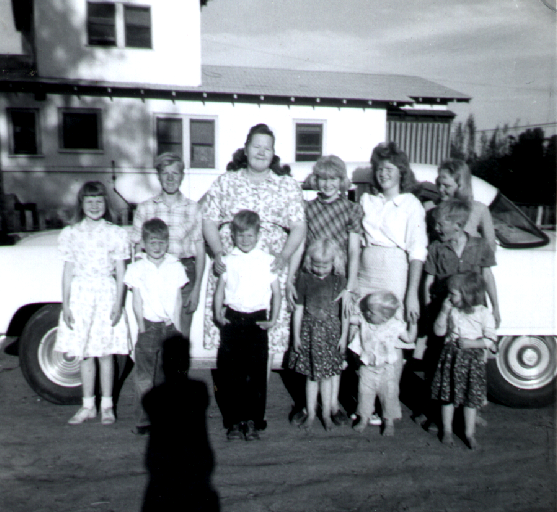
On the Advantage side I had the experience of my ten older siblings, from two to sixteen years my senior, who
taught me
things that would have taken many more years had they not been there to teach me. Due to illnesses I was
held back in
the first grade for missing too much school. I had when I was six, kidney infections, tonsilites, measles,
the mumps on the right side only, and a heart murmor. So, while I was held back in school due to missing
class,
my education continued at home in spite of the school system. From my sister Vi I learned art, from my
mother
and siblings I learned singing and harmony and how to remember lyrics, and how to play piano, and how other
instruments made other sounds, but with breathing or plucking, or stinging with a bow.
For instance, I learned long division with my sister who was four grades ahead of me, when I was seven. I
was
tutoring other students beginning in the third grade. I learned musical
instruments my older siblings were taking classes for, today I play 18 different instruments, maybe 19. So,
while we did not have a lot of material things, I had a wide range of experience to draw upon.
In 1971 my father broke his right leg (the 4th time in his life for that leg) while working in the barn with
my brothers. Shortly after that my second oldest brother left the farm for a singing career and my third
oldest brother married the daughter of the dairy owner and then moved back to Fresno, California. The rest
of the family moved to 360 acres in the mountains of Prunedale California, which was owned by his father in
law, the dairy owner, so now we were all family.
In Prunedale I had to walk over two miles just to get to the school bus stop. I was in the fourth, fifth and
part of the sixth grade while we lived in Prunedale. From there we returned to Fresno, California and my
father became a used car salesman. After a year or two in Fresno my parents bought a house and I continued
my education in a more city like atmosphere, up to the 11th grade, when I quit mostly due to boredom, I was
an A-B student.
I had, by the time I was a teen, many different career paths to choose from, simply because one of my
siblings, or their spouse, was in some particular business. By the time I was eighteen, I had already worked
in the following industries; Ranching; as in working the agricultural jobs in the Fresno, California area.
Dairy; as in milking cows, riding horses, fixing fences, etc. in Salinas, California. Used Car Lot - Lot
Boy; my father sold used cars and so before school I would start cars and on Saturdays I would wash them for
Palermo Auto Sales, my first 'official' paying job. Furniture Reupholstering, my oldest sister owned her own
business for fortyfive years and I spent a summer helping her. Roofer; nailing by hand - cedar shingles,
shake, ashphalt, hot mop tar work, rolled, rockspread, etc. Air Conditioning Installer/Service Tech; I have
two older
brothers who are HVAC Contractors. Entertainer, another older brother sang and played in bars, and I
accompanied him on various instruments. Cabinet Maker, my olderst brother built cabinets for people like
Clint Eastwood, and other famous people. Locksmith, my second oldest sister married a US Navy man who was a
facilities engineer for Fresno State University of California and a locksmith.
So, I had a LOT of dabbling in different industries, such that by the time I was in the seventh grade, when
we had career day and they asked me what I wanted to be when I grew up, I had already thought it through. I
had chosen for my career paths; Heating Ventilation and Air Conditioning technician, Computer Programmer,
and Locksmith. I have done all three for a living, and I feel I have mastered two. The two I have mastered
are Computer Programming and Locksmithing. So, this is how The Key Wizard came to be:
My work career
When I was fourteen, and attending junior high school, I would get to school by riding a ten speed bike I
had built from parts I had purchased from the local dump. But, I would first ride to the car lot where my
father was a salesman. The owner was usually there by seven a.m. and so I would arrive about ten after seven
and take a big ring of keys and start every car on the lot that was for sale, this was about thirty to forty
vehicles depending on the day. If I was unable to get one started I would leave a note for my father or tell
the boss if he was not too busy. Then I would ride my bike the rest of the way to school. On Saturdays I
would ride to the lot with my father in his car, and I would wash every car on the lot and then sweep and
wash the sidewalks in front of the sales lot. When that was done I would vacuum the floors of the offices
and wash the windows and clean the toilets. It was one Saturday in 1973 that after washing all the cars, I
walked to the conveinance store nearby and discovered PONG. The first computer game in a cabinet that
replaced the pin ball machine I had learned to love. I was hooked, and started reading more about computers.
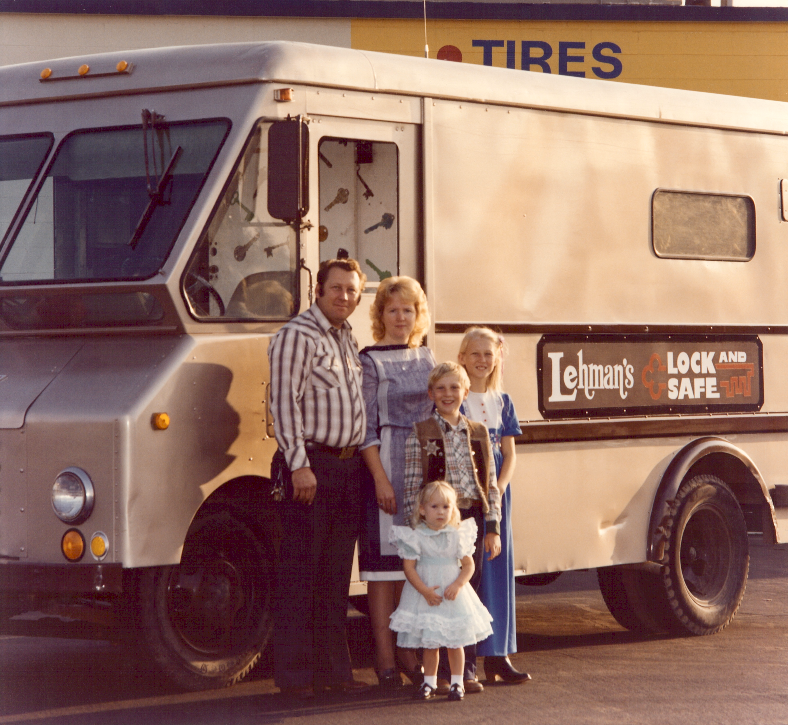
The following Saturday was the day after Auction, where the owner would travel to various cities in
California and buy trade-in vehicles from the New Car lots. I was there washing the cars as usual when my
brother in law pulled up in his house sized locksmithing truck. He had purchased an old postal delivery
truck, the warehouse sized ones, and built it into a mobile shop with everything he needed to do the job of
rekeyeing locks and making keys. He was there to make keys for a Mustang the owner had purchased but which
had come without keys as it had been a repossession. He had made a key for the ignition before I could
finish the car I was washing and turn the water off and get over to see what he was doing. He was in the
process of making a key for the trunk, for at the time, Mustangs had a different key for the trunk than the
one for the ignition.
I was fascinated! "How are you doing that?" I asked, and he stated that wiggling the key made a mark on the
key and he would cut the place where there was a mark, and he would say see, and set the key on his knee and
cut the mark, never actually allowing me an opportunity to see the marks. It was quite frustrating.
As you might imagine from where this is heading my next statement was "I want to do that." "What?" Lee asked?
I said, "I want to learn to make keys like that." "Why?" Lee asked me. "Because I want to do things that no
one else can do." "Come to my house next Saturday and we will see what you can do." he said and so I did!
The first thing he did was make me swear that IF he taught me locksmithing, that I would never use it to
steal from anyone, swear on my mother's life. Of course I made that oath and have kept it to this day. Now,
this was in 1973, and Lee, my brother in law, had been working with an older locksmith, Bud, who had a shop
in Fig Garden Village shopping center (The richest part of Fresno at the time.). Bud had given Lee a lot of
old locks, old equipment and old locksmithing books and magazines, many of them twenty years old at that
point.
Lee went to the boxes of locks and pulled out an old Schlage, 'A' Keyway wafer lock. If you are not an old
locksmith, you may not be aware that before Schlage was famous for having high quality locks, they had
really bad ones. Not mechanically, strength wise, Schlage has always made a strong and durable lock that
would withstand hundreds of thousands of uses before wearing out, and were tough to bust open. Unfortunately
they were extremely easy to pick open back in the 1950s. And that is the kind of lock Lee gave me, but I did
not know this at the time.
My first rekey
So, he hands me this heavy, well built lock and hands me a key, a key blank and a file. Then he says, take
this lock apart, rekey it so this key will no longer work, and make a new key that works properly. I was
astonished! I thought I was going to get to ride along with him and learn how to do exactly what he was
telling me to do, as if I should already know how to do it!
"I've never seen how to take one of these apart before, how am I supposed to know what to do?" I asked him.
"If
you want to be a locksmith, you are ALWAYS going to come across locks, safes and cars you have never seen
before and know nothing about, but you will have to be able to take them apart, rekey them, rebuild them in
some cases and occasionally manufacture an exact part from scratch, because no one makes the part anymore.
If you want to be a locksmith, I have to know you can do the job. So, by the time I get back today, I want
you to figure out how to take it apart, rekey it and make a key for it."
Now, I did not know about the Schlage Locks, their quality and the lack of security in the twenty year old
lock. I literally knew nothing. So, I got to it. Now if you don't know, again, Schlage locks are very well
built, and to disassemble this lock you had to first remove a cover held in place with cotter pins, then you
had to strike the retaining plate with a heavy screwdriver handle at just the right angle to dislodge the
retaining plate so that the rest of the lock can be disassembled and the key cylinder removed. I did not
know this. It took me over an hour to just pry that plate off, fearing the whole time that I would break it.
As soon as I had dislodged the retaining plate two powerful springs went flying across the room! The rest of
the lock seemed to fall apart in my hands with no indication of where the parts went!
I tried rekeying the lock, I had grease everywhere on my sister's kitchen table. I attempted to put the lock
back together and nothing seemed to fit, it was all very tight and had little tolerances, like less than
1/32 of an inch clearance. At the time, I thought that was tight, today I work with 1/1000th of an inch
clearance and think it sloppy. The springs were a complete mystery to me, as I am sure Lee was aware of. I
could get one in, but as soon as I tried to put in the second one the first would fly out, or it would jam,
half in and half out, and I was putting the spring harness in backwards! I finally put the lock back
together, with only one of the springs, and the old key still worked. I took it apart, I changed things and
tried again, another two
hours, again and again I tore that lock apart and put it together and there was always something wrong! It
was extremely frustrating, because Lee did not tell me how long he would be gone, I was under an unknown
deadline. The more I failed to get the lock to work correctly the more panicked I became.
Finally, I got it to work. Seven hours had past. Relief, I had got the lock to work perfectly. I cleaned up
all the grease and polished the knobs to shine like new! I did not realize that I was removing the varnish
which kept the brass shiny and that my polishing would quickly turn brown again. I was so very proud that I
had finished before Lee had come home.
When he arrived, I was standing there, beaming, lock in hand, key in lock, and old key in other hand. He
hadn't stepped through the door before I was saying "I did it!, It works real good." and I shoved the lock
into his hand saying "Try It! Try It!" So he looks at it critically, and tries the key, then he tests the
other key and nods his head. "Very Good, Come with me." and he leads me through his kitchen and as he passes
the trash can he drops the lock into it!
?! !!!? "What? I. . . I thought. . . I thought you needed that lock!" I said with quite a bit of
indignity!
"No, he said, I wanted to see if you could do it." The whole time we are heading to his back yard and he
opens his shed and takes out a box of about forty of the same type of lock. "Now, do all of these." He then
explained to me that Schlage had changed their security model, but not the basic structure of their very
well built locks. And, that once I could do those forty locks, I would be able to do the same with their new
locks as well.
He also had a number of boxes of magazines and books he had acquired from Bud of Buds Locksmithing in that
shed. The
magazines were pocket sized and were called The Locksmith Ledger
. Over twenty years worth of magazines and books about locksmithing. I eventually rebuilt all those locks
and (over several years) read every single one of those books and magazines. One of the highlights of my
career was getting to meet Bill Reed Jr. the son of the inventor of the Key Code system and Owner of the
Locksmith Ledger and a major contributor to all those articles that taught me a lot of what I know today. I
attended some of his classes on impressioning tubular locks, master lock key codes, Plymouth Air Bags (Brand
New Technology at the time) and more.
My First Master Key System
When I was seventeen, Lee took me on a job where we had to master key an entire apartment complex of twelve
apartments. My older brother, the Country Western Singer, was learning locksmithing by that time as well and
he was helping on the job.
Now, the way we were master-keying the locks is not the way one should ever master key locks. But, Lee had
never had any formal training on master keying, even though he had taken correspondence courses on
locksmithing. In the 1970's Master Keying was still a greatly secretive process and to purchase a printed
master key system cost close to six hundred dollars. And it did not include pinning charts or sub masters,
just pinning patterns.
So, what we were doing was taking one key from a box of hundreds of factory cut keys and designating it as
the Master Key, we would then take other keys, and make sure at least some of the cuts were different than
the Master. Then we would pin the lock to one of them, put in the other key and pull out any pins that were
too long. We would fill any gaps, and then carefully remove the key and put the Master back in and fill
those gaps, all the while trying to not knock the other pins off the round cylinder.
This was very inefficient and when we were done, we had to check the keys in each lock to make sure they did
not open each other. We did not understand what a master key system was. I realized that the pinning could
be calculated, before pinning the lock, mathematically and said so to Lee, but he disagreed stating it was
too complex.
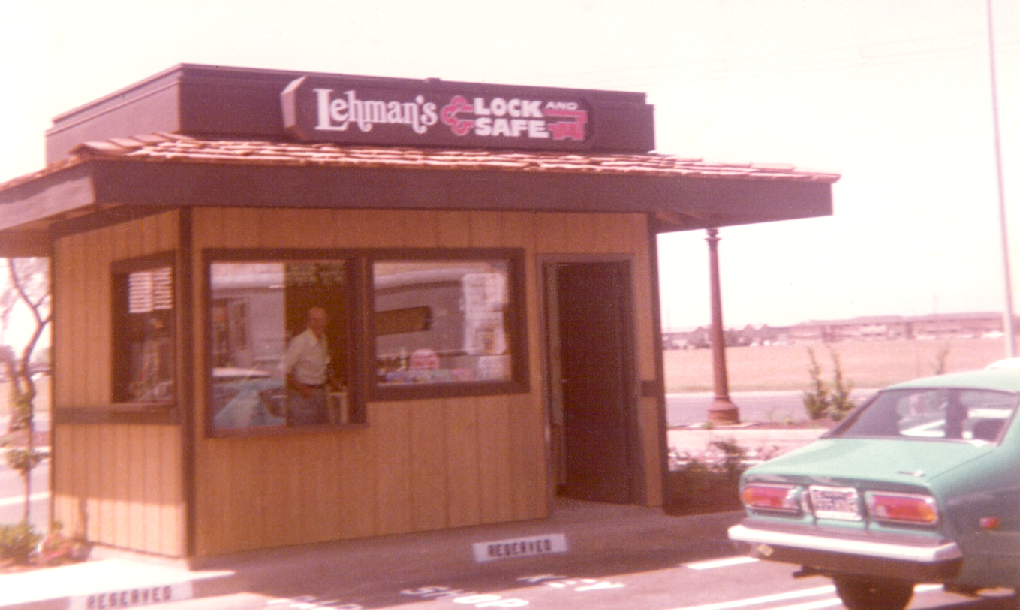
It was at that point I was sure there had to be an easy mathematical way. I started looking through all those
old Locksmith Ledger Magazines on anything I could find about Master Key Systems. And, mostly what I found
was charts of different Master Key Systems, but nothing on the science of Master Key Systems. As I
mentioned, at the time to produce a master key system required an expert with a typewriter who would print
out every sheet by hand, tediously. So there were not many people who UNDERSTOOD Master Key Systems that
would share their knowledge. By the time I was nineteen, I could write out a rudimentary master
key system for a small group of locks, but it was mostly because I could see the patterns inherent in a
master key system, not because I had figured out the underlying structure of Master Key Systems, that took
many more years. Also I had no understanding of sub masters and how they were a natural part of the
progression of the system, not something to be added in. So, those early charts were very likely flawed, but
fortunately we never found that out as we luckily avoided using the submasters in pinned cylinders.
Computer Programming
In my junior year of High School (Roosevelt Rough Riders) 1977, I took my first computer programming class.
At first I struggled, because up to that point all my experience with machines had been mechanical, and I
had always been mechanically inclined. I learned to disassemble and clean then reassemble guns while living
on the dairy. I could rebuild an engine, and did so while in Junior High so I could then build a go cart. I
could pick locks and pin locks and open cars, but computer programming was a whole new field. And, I didn't
understand it! To me, I could not make the connection between writing CODE and having a machine do
something. Also, none of my siblings were anywhere near interested in computers, math or science, so I had
no one to turn to for guidance. If you want to learn more about my life in programming, you can see more of
my life story here. www.howellsoft.com.
But, eventually I got it, I completed the class two months early and because I turned 18 and felt school was
offering me nothing, I quit school to work full time. While working for Lee in a drive up key shop he built
in Clovis California, I did everything I could to get him to invest the money needed to get a computer upon
which I was sure I could write a master key creation program, but he wasn't interested. He probably thought
that I would stop locksmithing and devote all my energies to computers, (he was probably correct) and that
was not in his best interest as he had already invested a couple of years training me to be a locksmith.
Eventually I quit trying to get Lee to buy a computer so I could learn how to write the program, it would
have only cost a couple of thousand dollars to get an eight bit computer kit at the time. A kit I would have
had to solder together to make work. Today an Arduino UNO has more
capabilities than that computer did.
A few years later though, 1982, the Timex Sinclair 1000 came out. A $99 eight bit single chip computer. The
chip was the Z80. Not as
powerful as an Arduino today, but still impressive for the time. I burnt three of them out over the next few
years learning to hone my computer programming skills.
The SECRET OF THE UNIVERSE
Over the next twenty years I became an expert locksmith and safe technician and learned as much about
computers as I could without any formal training past High School. Then, I discovered the Secret of the
Universe - Things Change, and I found myself working for a little lockshop in Bullhead City Arizona. On the
side I was running my first business; RAM Programming - Ray's All-Micro Programming. I was writing software
for customers that had purchased small computers but really didn't know much of what to do with them. I
would write custom software for managing their business records. I set up one of the first Real Estate
offices in Bullhead City to use the Multiple Listing Services system. At this time computers were still
mostly limited to monochrome cathode ray tube displays and 8086 processors.
I had mastered the theory of Master Key Systems and could produce a chart by hand in about an hour. It was
during this time that I wrote the beginnings of what would become Key Trax. I wrote a program that would
allow someone to create a five pin master key system, just the change patterns, due to printer limitations,
not the full chart, and I
submitted it to The Locksmith Ledger as shareware for other locksmiths to copy into their computers and
print out Master Key Systems using the BASIC language, which meant with little alteration, it would run on
dozens of different computers. And the Locksmith Ledger printed it up in an article. The first publication
of my work.
One of the main clients for the lockshop I worked at was a
Real Estate office that managed dozens of rental properties. I wrote them a package to manage their rentals.
This was shortly after IBM came out with the first PC and in fact I wrote the software on an IBM running MS
Dos 1.0. They used that software until Windows 95 came out. It was in fact they, Property Management
Services, later to be renamed Buck Reynolds Real Estate, that started The Key Wizard for me. The little
lockshop I was working for sold and the new owners didn't need me as they were criminals who soon went to
jail, I think it was nine or ten months before the police caught them breaking into storage units at night.
When Steve Buck told his business partner, Joe Reynolds, that I was without a job because the lockshop had
sold, Joe suggested that they put me in business. Together we started The Key Wizard in November of 1987. We
soon had all the customers of the old lockshop as it had been closed down by the police. After the first
year of Buck/Reynolds keeping me alive and paying my bills, they called me in for a meeting and GAVE me the
entire ownership of The Key Wizard. I am forever grateful to these two great men and their wives.
Three years later and I was offered a job working for Circus Circus as the locksmith for The Edgewater Hotel
and Casino in Laughlin Nevada. I was their locksmith for thirteen years. During my tenure there, I wrote the
first complete version of Key Trax and met my wife. The reason I wrote it was there were over 1200
keyed locks on the property and there was nothing available on the market that did anything more than
print the pinning patterns for a Master Key System. I wanted more, I wanted to track the keys issued, I
wanted to know which doors were keyed to which keys and more, and since nothing like that existed, I wrote
it.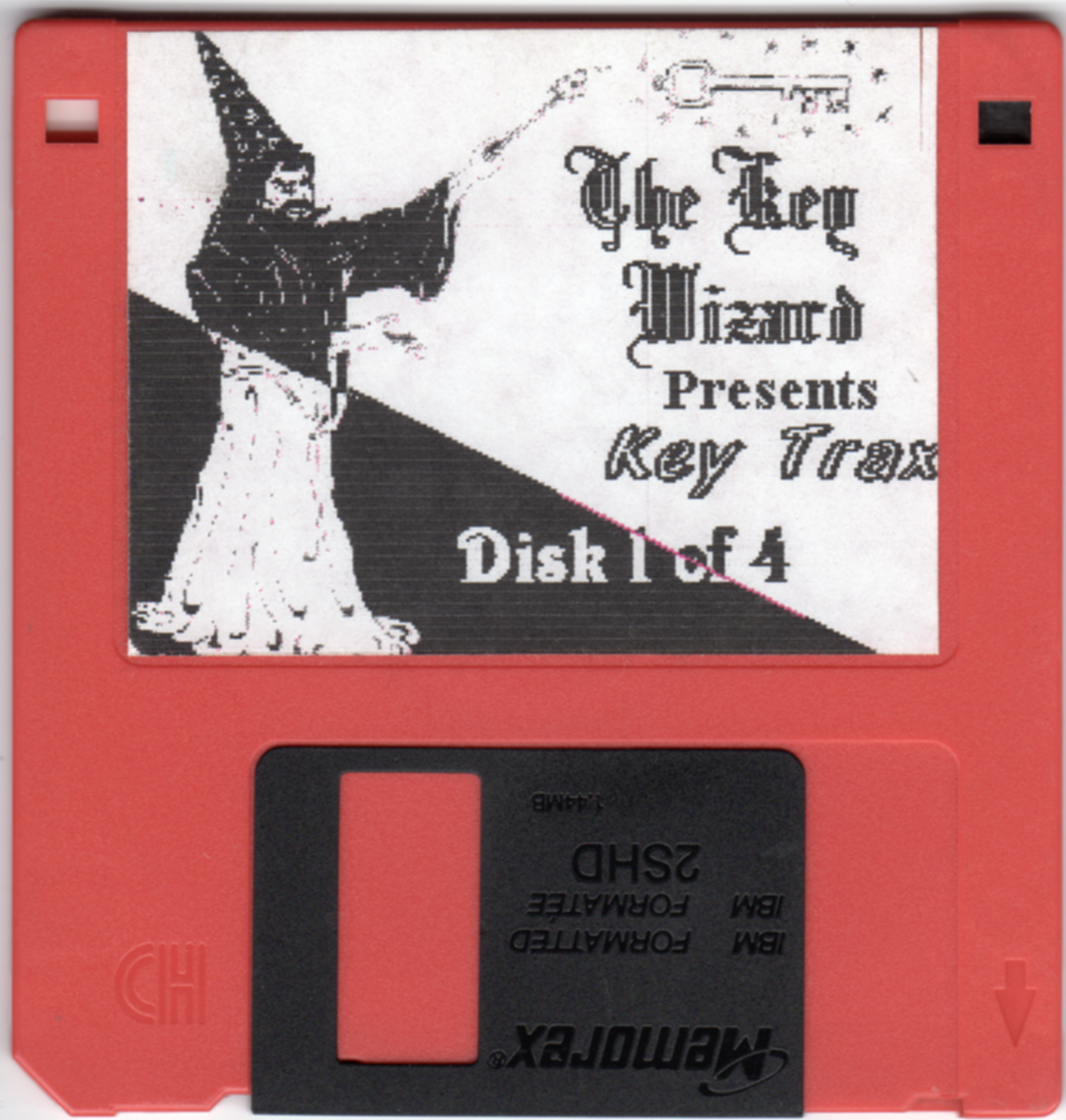
Key Trax and Key Trax II
When I was done writting Key Trax, I realized that it had a lot of commercial potential, so I
approached
Circus Circus management about the fact that I had done much of the work on the software during my
employment with them, while on the clock. I explained in a letter that I understood that technically it
belonged to Circus Circus but that I felt it was commercially viable. I was hoping they would want to
produce it and use it in the industry as they owned nearly a dozen casinos at that time. Instead I received
a letter from the legal department granting me full ownership of the software to do with as I pleased.
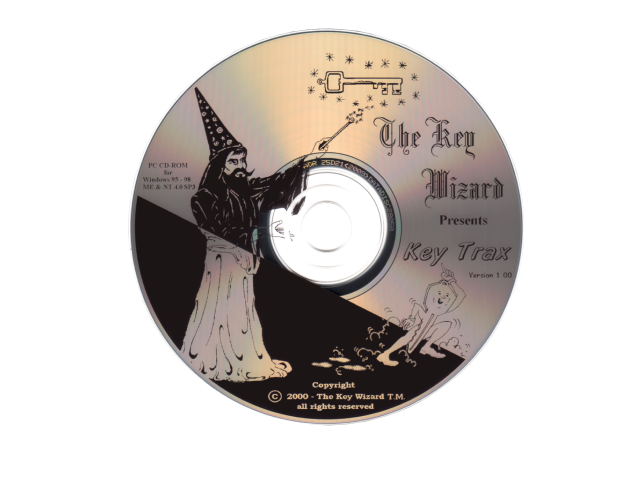
It was during this time that I returned to school, at my wife's' insistence that I get the
"Papers" to back my claim to be able to write software, to obtain my Associate of Applied Science in
Computer Systems Administration. Between working, classes and school work, I began visiting
locksmiths along the river in Laughlin Nevada, and then locksmiths in Arizona, California and finally Las
Vegas, to demonstrate what Key Trax could do for them.
When I demonstrated Key Trax to the Venetian Hotel and Casino in Las Vegas, they offered me a job on the
spot. I turned them down, but a year later they called me and made the offer again, multiple times, so I
moved to and went to work in Las Vegas. The only problem was that I had been attending college, and I had
two more classes to complete my degree. I contacted my college, Mohave Community College in Bullhead City Arizona,
and they allowed me to
complete my final two classes from Las Vegas, through email no less. So, in my
first year in Las Vegas, I completed my Associates Degree in Systems Administration with certificates in
Advanced Systems Administration, Computer Programming and Network Support. This was when I began developing
Key Trax II. The Venetian was at the time the largest Casino-Resort in America, with Vail Resort in Colorado
being the largest stand alone resort (They also use Key Trax II). I improved on Key Trax based on the needs of
the Venetian and many other properties in Las Vegas. I had many of the lockshops in nearby casino's do beta testing for
me as the program neared completion. They made suggestions and helped me improve its functionality based on
their needs.

In 2006 my wife and I invested every penny we could beg, borrow, and max out on our credit
cards to
Unveil Key Trax II at the Security Expo West in Las Vegas .
I had left Casino Locksmithing and gone to work for the Largest Lockshop in the Western United States as one
of their top Field Technicians. At the time they had 28 trucks and 35 locksmiths working for them. Besides being one of their top three earners, I trained the other locksmiths
in master key systems, sales techniques and safe work. I was of course their Master Key expert and safe
technician, installing safe locks at level SECRET for the Secret Service and Nellis Air Force Base.
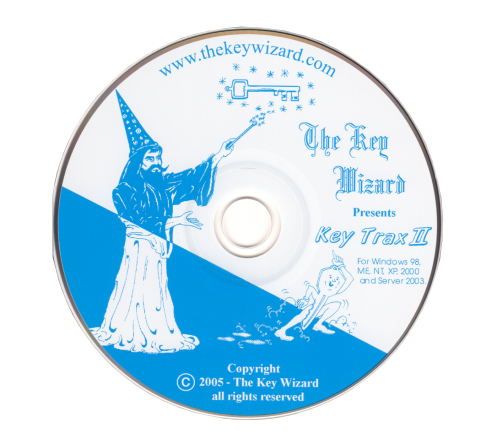
Disaster!
On June 30, 2006, just five days before the beginning of the Trade Show, I was evaluating a new hire for the
lockshop. As we neared the lockshop we had a red light on Sahara Avenue. An idiot plowed
into us at about fifty miles an hour. He never hit his brakes. I had my head turned to the right speaking to
the new hire at the moment of impact some twenty seconds after coming to a full stop. If I had not had the
habit of stopping my vehicle at least one vehicle length behind the vehicle in front of me, we would have
been forced into the next vehicle. We had 12 feet of skid marks, the truck that hit us had none.
The trade show went terribly, (this is my BEST smile that day through the pain) my laptop had been in the van when we were hit and one hour after setting up
for the show, just two hours before doors opening, it quit working. I had to run across Las Vegas in heavy
traffic to get to Fry's Electronics and buy a new laptop. We had a custom projection screen made with The
Key Wizard logo on it and a projector so that I could do live demonstrations of the software during the trade
show. I was in terrible pain and could not properly display Key Trax II in action. I couldn't smile due to
the pain and only managed to make two sales of the software during the show. For the last fourteen years I
have been in tremendous pain, and was on a lot of heavy medications, and I could not think to do more
programming.
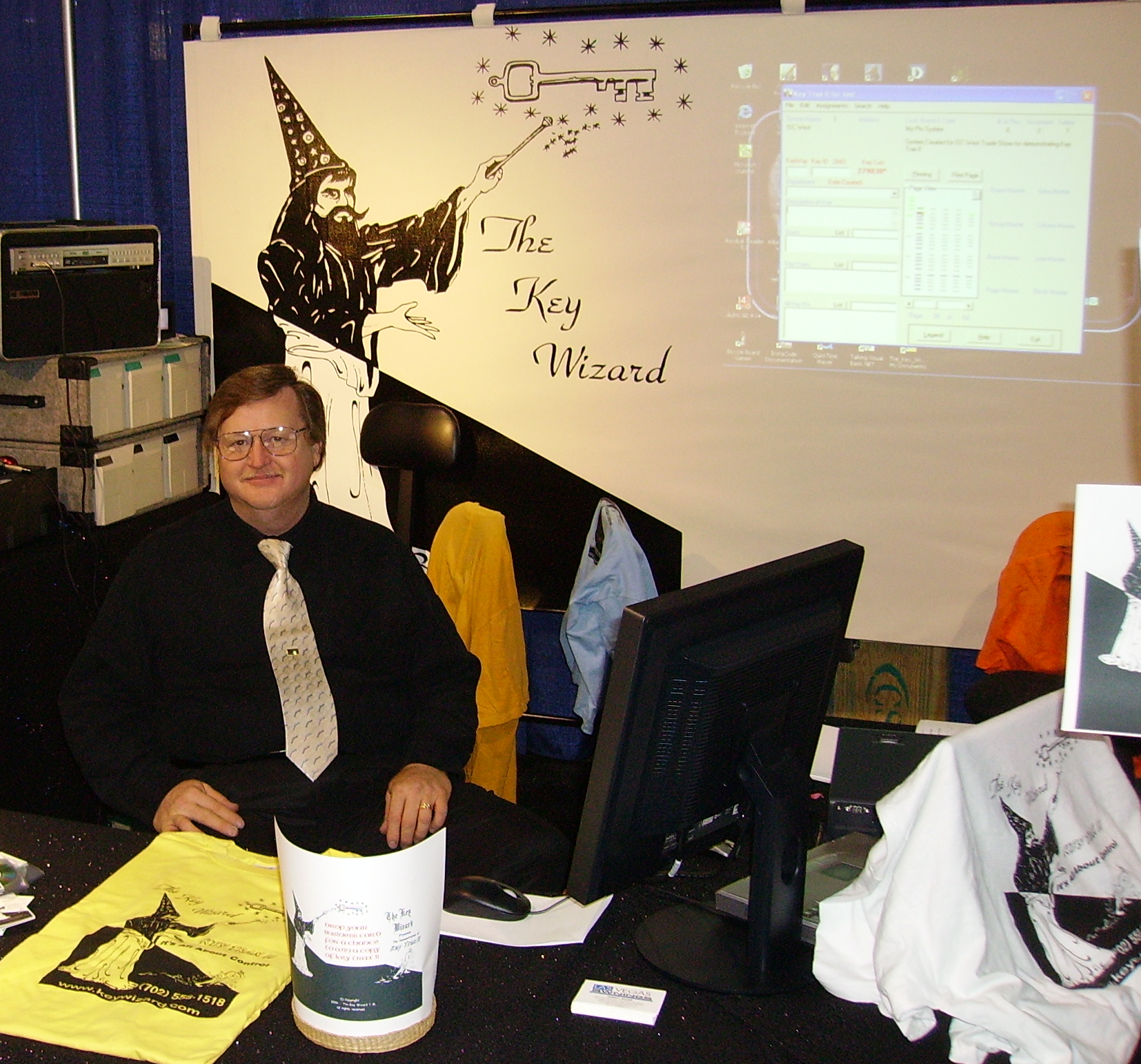
I did work for a time for a cell phone company, but that is another story. While working there, I obtained my
High School Equivalency, yes, after I had an Associates Degree. And then I attended the Howard Hughes School
of Engineering, eventually completing my BA in Business Information Systems in 2013 at Ashford University
online.
Also during this time, I attended a trade school and acquired certifications in programming, database
Administration
and Windows operating systems from Microsoft as well as Linux systems administration through CompTIA.
Despite the injury and the constant pain, over the years I have sold Key Trax II from Australia to the U.K.,
Resorts, Schools, City Governments, Independent Businesses, Locksmiths, Airlines, and others have purchased
and enjoyed using Key Trax and Key Trax II. Because I followed Microsoft's Best Practices when I wrote Key
Trax and Key Trax II both will run in every version of Windows since Windows 95.
The Secret of the Universe (Again)
In 2018 I visited Colorado and discovered that my pain levels dropped as soon as I reach the eastern side of
the Rocky Mountains. After testing the effect over a three month period, a week at a time each month, my
wife and I sold our home in Las Vegas and moved to Fort Collins Colorado. I am now able to write software
again and have done so by updating Key Trax II to use the HTML Help system in Windows 8.1 and Windows 10. So
with the latest update, Key Trax II is now 100% Windows 8.1 and 10 Compatible.






